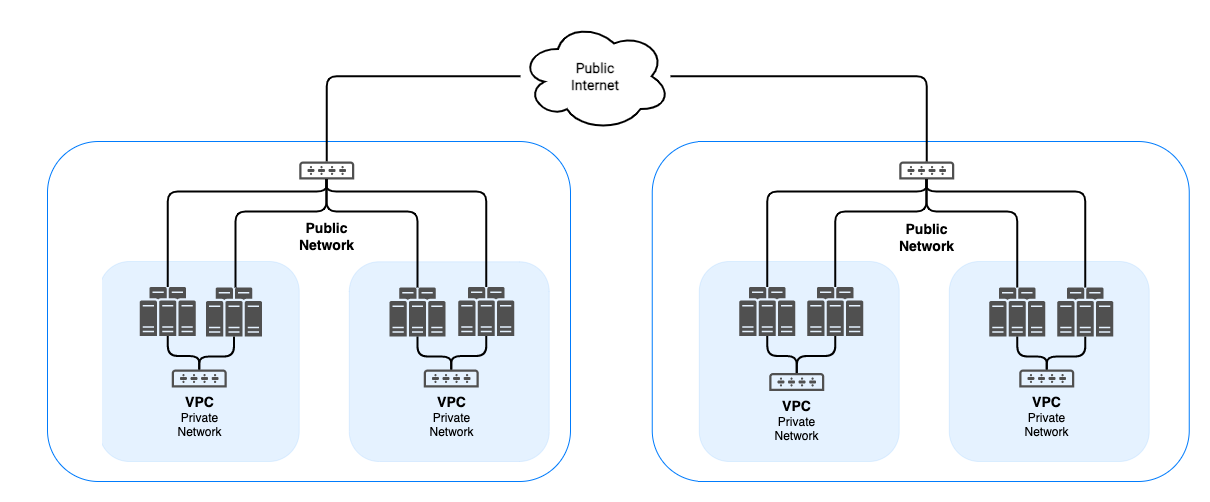In today's interconnected world, ensuring secure communication between devices is more critical than ever. The rise of Internet of Things (IoT) technology has transformed industries, but with this innovation comes the challenge of maintaining robust security. If you're looking to securely connect remote IoT devices using P2P SSH on Windows for free, you've come to the right place. This article will guide you through the essential steps, tools, and best practices to achieve this goal. Whether you're a beginner or an advanced user, this guide will provide you with everything you need to know.
IoT devices are becoming increasingly common in homes, businesses, and industries, making it vital to protect sensitive data and ensure seamless communication. Securely connecting remote IoT devices via peer-to-peer SSH protocols on Windows without incurring unnecessary costs is both feasible and practical. This article aims to demystify the process by breaking it down into manageable steps, offering practical tips, and addressing common challenges. By the end of this guide, you'll have the confidence and knowledge to set up a secure IoT network effortlessly.
As we dive deeper into this topic, we'll explore the importance of securing IoT devices, the role of SSH in establishing secure connections, and how to implement these technologies on Windows for free. We'll also address frequently asked questions and provide valuable resources to help you along the way. So, whether you're setting up a home automation system or managing an enterprise-level IoT network, this guide is your ultimate resource for achieving secure connectivity.
Read also:1 Day Pass Planet Fitness Your Gateway To Fitness Fun
Table of Contents
- 1. What Is Securely Connect RemoteIoT P2P SSH Download Windows Free?
- 2. Why Is Secure IoT Connectivity Important?
- 3. How Does SSH Work in IoT Networks?
- 4. Can You Securely Connect RemoteIoT P2P SSH Download Windows Free?
- 5. Steps to Set Up Secure IoT Connections on Windows
- 6. Tools and Software for Free IoT Security
- 7. Best Practices for Securing IoT Devices
- 8. FAQs About Securely Connect RemoteIoT P2P SSH Download Windows Free
What Is Securely Connect RemoteIoT P2P SSH Download Windows Free?
Securely connecting remote IoT devices involves establishing a reliable and encrypted communication channel between devices, even when they are geographically distant. The phrase "securely connect remoteIoT P2P SSH download windows free" encapsulates the process of setting up a peer-to-peer (P2P) Secure Shell (SSH) connection for IoT devices on a Windows operating system without any financial burden. SSH is a cryptographic protocol that ensures secure data transmission over an unsecured network.
This method is particularly appealing for individuals and organizations seeking cost-effective solutions for their IoT infrastructure. By leveraging SSH, users can authenticate devices and encrypt data, preventing unauthorized access and potential breaches. The "free" aspect highlights the availability of open-source tools and software that facilitate this setup, making it accessible to everyone.
For example, using tools like PuTTY or OpenSSH on Windows, users can establish secure connections between IoT devices without investing in expensive proprietary software. This approach not only enhances security but also promotes interoperability among different devices and platforms.
Why Choose SSH for IoT Connectivity?
SSH offers several advantages for IoT connectivity, including:
- Encryption: SSH encrypts all data transmitted between devices, ensuring confidentiality and integrity.
- Authentication: It provides robust authentication mechanisms to verify the identity of devices.
- Interoperability: SSH works across various platforms and devices, making it ideal for diverse IoT ecosystems.
- Cost-Effectiveness: Many SSH tools are available for free, reducing the financial burden on users.
Why Is Secure IoT Connectivity Important?
In the age of smart devices, securing IoT networks is paramount. IoT devices often collect and transmit sensitive data, making them attractive targets for cybercriminals. A single compromised device can jeopardize the entire network, leading to data breaches, financial losses, and reputational damage. Therefore, ensuring secure connectivity is not just a best practice but a necessity.
Secure IoT connectivity protects against unauthorized access, data theft, and malicious attacks. It also ensures compliance with industry standards and regulations, such as GDPR and HIPAA, which mandate stringent security measures for handling personal and sensitive information. By prioritizing security, organizations can build trust with their customers and stakeholders, fostering long-term relationships.
Read also:Joyce Dewitt Partner A Comprehensive Look Into Her Life And Relationships
Moreover, secure IoT networks enhance operational efficiency by minimizing downtime and reducing the risk of costly repairs and replacements. For instance, in industrial settings, secure connectivity ensures uninterrupted communication between machines, improving productivity and reducing errors.
What Are the Risks of Insecure IoT Networks?
Insecure IoT networks expose organizations and individuals to various risks, including:
- Data Breaches: Unauthorized access to sensitive information can lead to severe consequences.
- Device Hijacking: Hackers can take control of IoT devices, using them for malicious purposes.
- Denial of Service (DoS): Attackers can overwhelm IoT devices with traffic, rendering them unusable.
- Reputational Damage: Security incidents can harm an organization's reputation, affecting customer trust.
How Does SSH Work in IoT Networks?
SSH, or Secure Shell, is a network protocol that provides secure communication between devices. In IoT networks, SSH plays a crucial role in establishing encrypted connections, authenticating devices, and ensuring data integrity. When you securely connect remote IoT devices using SSH, the protocol creates a secure tunnel through which data can be transmitted safely.
The SSH protocol operates on two main components: the client and the server. The client initiates the connection, while the server listens for incoming requests. Once a connection is established, SSH uses encryption algorithms to protect data from unauthorized access. Additionally, it employs public-key cryptography for authentication, ensuring that only authorized devices can access the network.
For example, when setting up a remote IoT device on Windows, you can use SSH to configure settings, monitor performance, and troubleshoot issues securely. This capability is particularly valuable for managing IoT networks from a centralized location, improving efficiency and reducing costs.
How to Configure SSH for IoT Devices?
Configuring SSH for IoT devices involves several steps:
- Install an SSH server on the IoT device.
- Generate SSH keys for authentication.
- Configure firewall settings to allow SSH traffic.
- Test the connection to ensure secure communication.
Can You Securely Connect RemoteIoT P2P SSH Download Windows Free?
Yes, it is entirely possible to securely connect remote IoT devices using P2P SSH on Windows for free. Open-source tools like OpenSSH and PuTTY provide the necessary functionality to establish secure connections without incurring any costs. These tools are widely used in both personal and professional settings, offering robust security features and ease of use.
To achieve this, you'll need to download and install the appropriate software on your Windows machine. Once installed, you can configure the settings to establish a secure connection with your IoT devices. This process typically involves generating SSH keys, configuring firewall settings, and testing the connection to ensure everything is working as expected.
For instance, using OpenSSH, you can set up a secure tunnel between your Windows computer and an IoT device located anywhere in the world. This setup allows you to remotely manage and monitor the device, ensuring optimal performance and security.
What Are the Benefits of Using Open-Source Tools?
Open-source tools offer several advantages:
- Cost-Effectiveness: They are free to use, reducing expenses for individuals and organizations.
- Community Support: A vast community of developers and users provides support and resources.
- Customizability: Users can modify and enhance the tools to meet their specific needs.
- Security: Open-source tools are often more secure due to their transparency and collaborative development process.
Steps to Set Up Secure IoT Connections on Windows
Setting up secure IoT connections on Windows involves a series of steps that ensure robust security and seamless communication. Below is a detailed guide to help you through the process:
- Install SSH Client and Server: Begin by installing an SSH client and server on your Windows machine. Popular options include OpenSSH and PuTTY.
- Generate SSH Keys: Create SSH keys for authentication to enhance security and eliminate the need for passwords.
- Configure Firewall Settings: Adjust your firewall settings to allow SSH traffic, ensuring that the connection is not blocked.
- Test the Connection: Verify the connection by initiating a test session with your IoT device.
- Monitor and Maintain: Regularly monitor the connection and apply updates to maintain optimal performance and security.
Each step is crucial for establishing a secure and reliable IoT network. By following this guide, you can ensure that your devices are protected from potential threats and operate efficiently.
How to Troubleshoot Common Issues?
When setting up secure IoT connections, you may encounter common issues such as:
- Connection Refused: Ensure that the SSH server is running and that firewall settings allow SSH traffic.
- Authentication Failed: Verify that the SSH keys are correctly configured and match between the client and server.
- Timeout Errors: Check network connectivity and ensure that the device is reachable.
Tools and Software for Free IoT Security
Several tools and software are available for securing IoT devices on Windows for free. These tools offer a range of features, from encryption and authentication to monitoring and management. Below are some of the most popular options:
- OpenSSH: A widely used open-source SSH server and client that provides secure communication capabilities.
- PuTTY: A free SSH and Telnet client that supports secure connections to remote devices.
- Wireshark: A network protocol analyzer that helps monitor and troubleshoot IoT networks.
- OpenVPN: A free and open-source virtual private network (VPN) solution that enhances security for IoT devices.
These tools, combined with best practices, can significantly enhance the security of your IoT network without incurring any costs.
Best Practices for Securing IoT Devices
Securing IoT devices requires a comprehensive approach that addresses both hardware and software vulnerabilities. Below are some best practices to help you achieve optimal security:
- Use Strong Passwords: Implement complex passwords and change them regularly to prevent unauthorized access.
- Enable Two-Factor Authentication: Add an extra layer of security by requiring two forms of identification for access.
- Keep Firmware Updated: Regularly update device firmware to patch vulnerabilities and enhance performance.
- Limit Network Access: Restrict network access to only authorized devices and users.
By following these best practices, you can significantly reduce the risk of security breaches and ensure the longevity and reliability of your IoT network.
FAQs About Securely Connect RemoteIoT P2P SSH Download Windows Free
What Are the Most Common Challenges in Securing IoT Devices?
Common challenges include managing device authentication, ensuring data encryption, and addressing firmware vulnerabilities. Overcoming these challenges requires a combination of robust tools and best practices.
Can SSH Be Used for Non-IoT Devices?
Yes, SSH can be used for non-IoT devices as well. It is a versatile protocol that supports secure communication across various platforms and applications.
Are There Any Paid Alternatives to Open-Source Tools?
Yes, there are paid alternatives that offer advanced features and dedicated support. However, open-source tools like OpenSSH and PuTTY provide sufficient functionality for most users.
Conclusion
Securing IoT devices using P2P SSH on Windows for free is a practical and cost-effective solution for individuals and organizations alike. By leveraging open-source tools and following best practices, you can establish a secure and reliable IoT network that protects sensitive data and ensures seamless communication. This guide has provided you with the knowledge and resources to achieve this goal, empowering you to take control of your IoT infrastructure and enhance its security.


